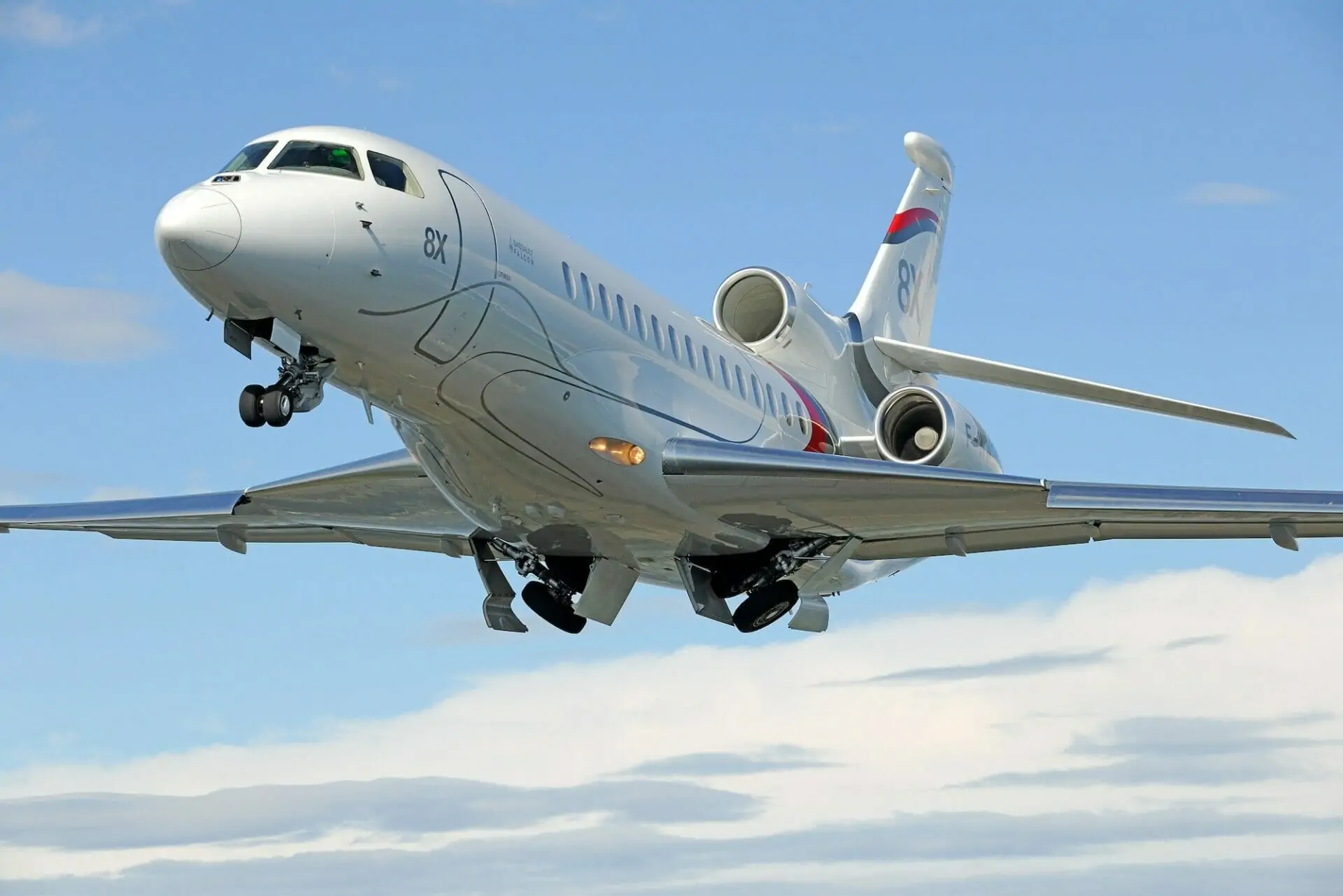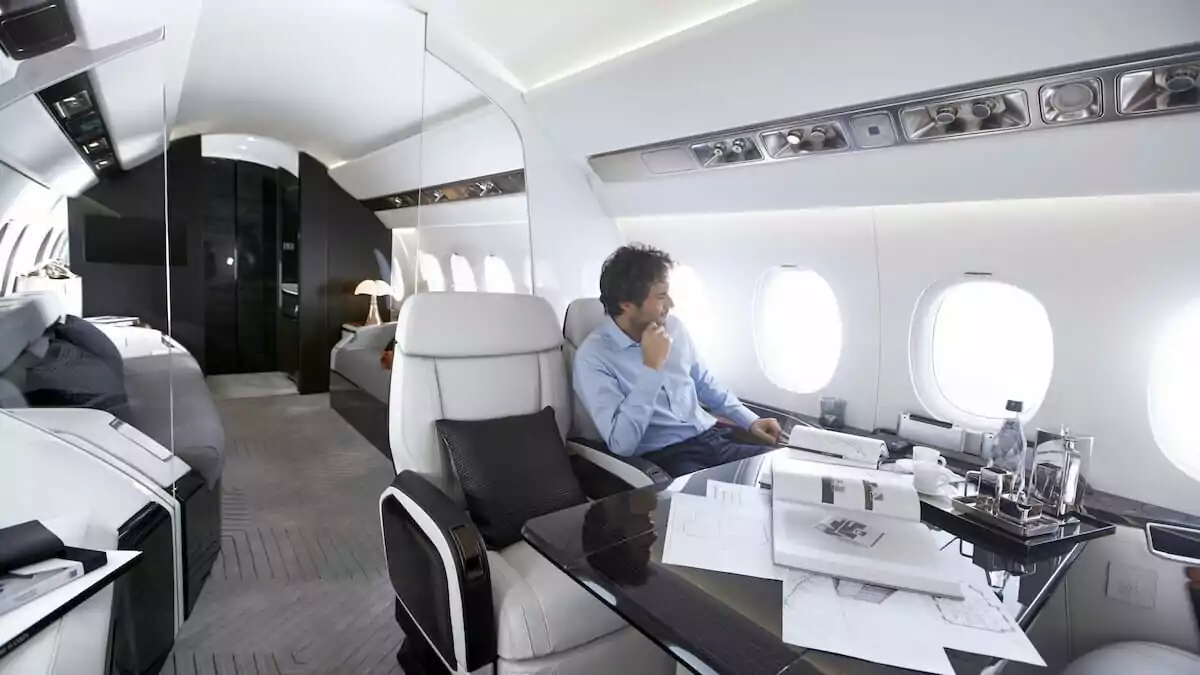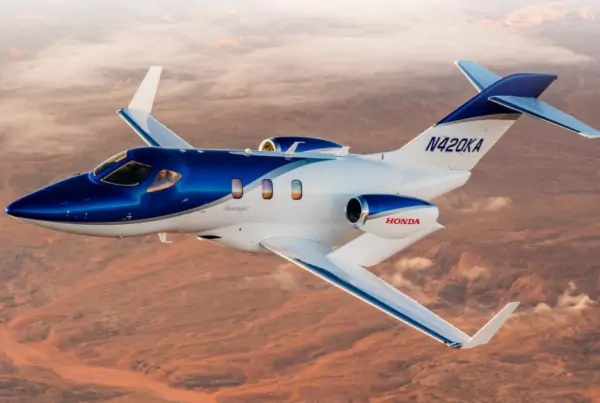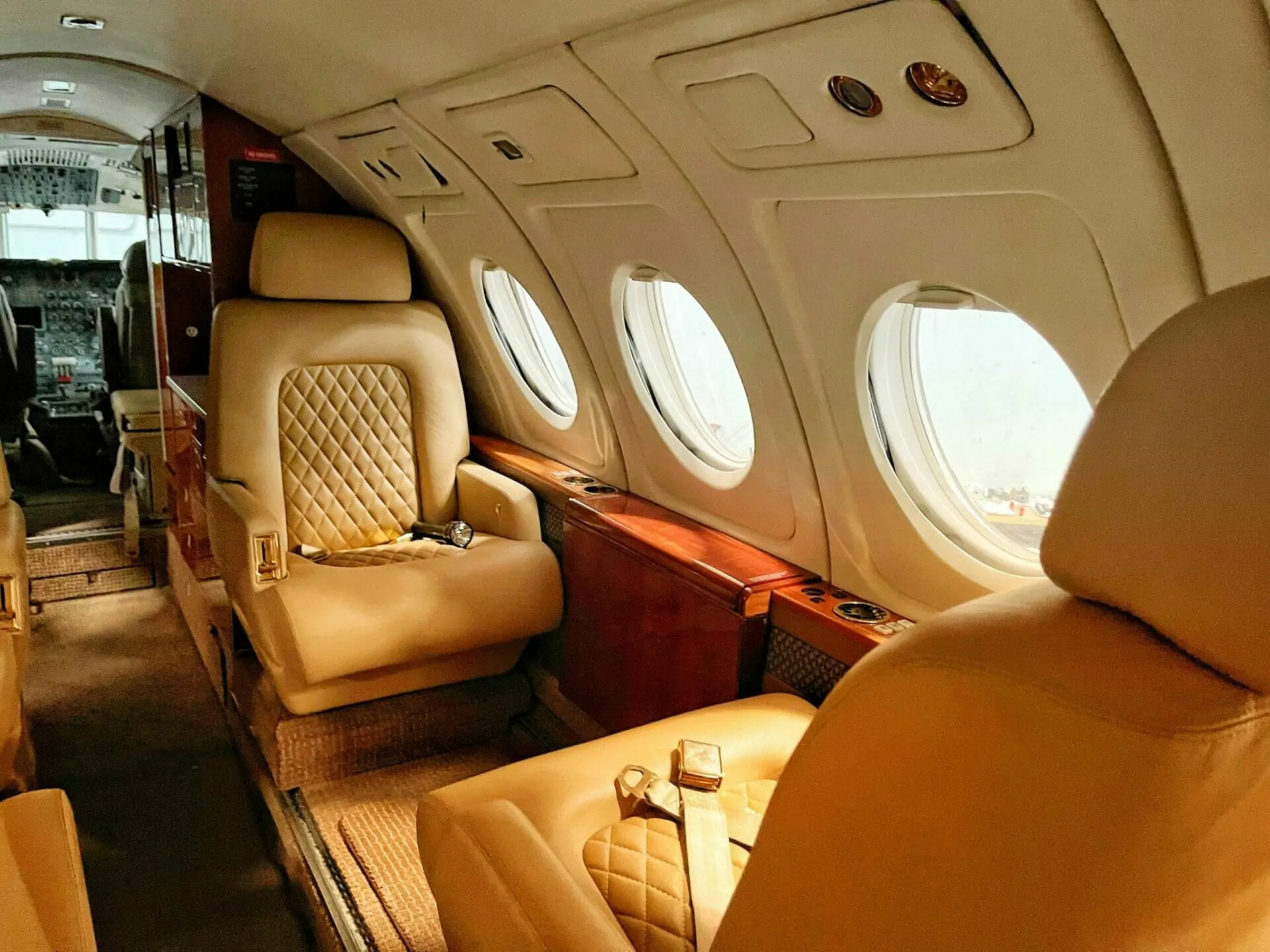Trijet private jets have a distinctive design with three engines mounted to the rear of the aircraft.
However, questions are often asked about the reason for three engines on a private jet, the benefits that it carries, along with why there are few trijet models on the market.
Additionally, given the lack of trijet aircraft currently being produced, how much longer will they be around before they become extinct?
What Are Trijet Aircraft?
A trijet aircraft is one that is powered by three engines.
These designs were popular in the 1960s and 70s among commercial airliners as they increased the performance of the aircraft and reliability. This is because the more engines there are, the less catastrophic it is if one engine were to fail.
This is especially important when flying over large bodies of water.
Trijet aircraft typically have two engines mounted at the rear of the aircraft (just like other private jets) and a third engine mounted in the tail.
Private jets have their engines mounted at the rear rather than under the wings due to the size of the aircraft. Aircraft need to have more substantial landing gear and be higher off the ground in order to accommodate engines under the wing.
History
Trijet aircraft originally started with military and commercial applications.
The style can be dated all the way back to the late 1940s when Tupolev released the Tu-73 bomber prototype. However, this project was soon canceled.
Despite this, trijet aircraft continued to be developed in a commercial compacity, with the Hawker Siddeley Trident and Boeing 727 being developed in the early 1960s.

The first trijet private jet to be produced was the Dassault Falcon 50, with its first flight in 1976 and deliveries starting 4 years later.
Dassault then continued producing trijet aircraft with the Falcon 900 in the mid-1980s, Falcon 7X, and Falcon 8X.
While the Falcon 50 family had 3 variants (the Falcon 50, Falcon 50EX, and Falcon 50-40), the Falcon 900 lineup is still being produced today with the Dassault Falcon 900LX.
In the world of commercial passenger jets trijet aircraft have been phased out, with no commercial trijet aircraft currently in production.
Current TriJet Private Jets
Currently, there are just three trijet private jets currently in production.
These are the Dassault Falcon 900LX, Dassault Falcon 7X, and Dassault Falcon 8X.

Thanks to the three engines, these aircraft all have impressive ground performance and are highly efficient.
Additionally, they are popular in the industry thanks to their distinctive design.
Past TriJet Private Jets
As mentioned, the only producer of trijet private jets has been Dassault with their Falcon aircraft.
The Falcon 50 was the first trijet private jet to hit the market, followed quickly by the Falcon 50EX and Falcon 50-40. These variants were all based on the same trijet platform.
The next model to feature three engines was the Falcon 900 family of aircraft with over 7 variants in the past 35 years.
There has been the Falcon 900, 900B, 900C, 900DX, 900EX, 900EX, 900EX EASy, and finally the Falcon 900LX.
And that’s it.
While the trijet is iconic, it has never been picked up by other manufacturers.
Advantages of Three Engines
Trijet aircraft have 2 primary advantages over twin-jet aircraft, with a third advantage that has become less relevant over time.
Firstly, trijets are typically more efficient than trying to extract similar performance from two engines.
Having three engines means that each engine can be smaller and therefore more efficient per engine.
For example, the Falcon 900LX has a peak thrust output of 5,000 lbs per engine. This, therefore, results in a total peak thrust output of 15,000 lbs. Now let’s compare with a similar-sized twin-jet aircraft, the Falcon 2000LXS. The Falcon 2000LXS has an engine peak thrust output of 7,000 lbs. This, therefore, results in a total thrust output of 14,000 lbs.
So, even though the 2000LXS has more powerful engines, the total thrust output is lower. Additionally, given that each engine is larger and more powerful, they consume more fuel overall.
An important note here is that the Falcon 900LX is a heavier aircraft but roughly the same size as the 2000LXS. Despite this, the 900LX can cruise higher and faster than the 2000LXS, all while burning less fuel (260 gallons per hour vs 269 gallons per hour).

Second, better ground performance. Trijets have better take-off performance than equivalent twin-jet aircraft. Again, let’s compare the Falcon 900LX with the Falcon 2000LXS.
As mentioned, the 900LX is heavier and only has 1,000 lbs more thrust than the 2000LXS. However, the Falcon 900LX is able to take off in just 5,360 feet compared with the minimum 5,878 feet that the twin-engine 2000LXS requires.
Moreover, take-off distance is typically calculated to have a margin of safety for possible engine failures and clearing obstacles. As a result, trijets are better suited for taking off from hot and high airports.
Additionally, the trijet design helps with steep approaches and climb-outs, such as from London City Airport.
The third advantage, albeit less relevant these days, is safety. If one engine fails on a trijet there are still two engines left, albeit not as powerful as the individual engines on a twin jet.
For example, if an engine on the Falcon 900LX fails, the total thrust drops to 10,000 lbs. If an engine fails on the 2000LXS the total thrust output drops to 7,000 lbs. So, all of a sudden, that 1,000 lb thrust advantage of the Falcon 900LX increases to 3,000 lbs if an engine fails on each aircraft.
However, this is rarely stated as a benefit of trijets due to the increased reliability of modern jet engines.
Disadvantages of Trijet Aircraft
The biggest disadvantage of trijets is cost.
Yes, they are marginally more fuel efficient, however, most twin jets have comparable performance.
Again, the classic Falcon 900LX vs Falcon 2000LXS comparison. Yes, the 900LX is more fuel efficient, but only by 9 gallons per hour. So there is cost saved there.
However, the more engines there are, the more time is spent maintaining them. Even though it may take fewer hours to maintain each individual engine on a trijet, it is only marginal compared with a twin-jet aircraft.
Additionally, if you need parts, you will need three of everything rather than two.

In terms of ground performance as well, jet engines are so much more efficient and powerful than they used to be. Therefore, it is possible to get the same, if not more, power from just two engines versus three.
Additionally, the power of twin-jet aircraft is not such that the performance capabilities of trijets are not so unique. Yes, the Dassault Falcon 8X can land at London City Airport but so can the Bombardier Global 6000.
And finally, safety is no longer a valid reason for the third engine. Again, modern jet engines are now reliable enough to not need the third engine.
The Future of TriJet Private Jets
Sadly, three-engined private jets don’t have much of a future.
This is best demonstrated by Dassault themselves with the two newest aircraft – the Falcon 6X and Falcon 10X.
Dassault is the only manufacturer left that produces three-engined private jets and given that the newest aircraft don’t have them, it’s unlikely that any other manufacturer will start producing three-engined aircraft.
The reasons for this choice are because of everything mentioned previously, there is no longer a valid reason for the three engines.

Realistically, it comes down to the cost of operating.
The majority of buyers look at the three engines and assume that more engines equal higher costs. And while this is true in some areas it is somewhat offset by the increased efficiencies elsewhere.
Therefore, a three-engined aircraft is often harder to sell than a twin-engined equivalent.
Summary
It’s a shame that the trijet era is coming to an end.
However, with engines becoming more powerful, more efficient, and more reliable while not getting bigger means that it’s hard to justify that third engine.
This is similar in the commercial aviation world how 4 engined aircraft are slowly being phased out for twin-engine alternatives.
It’s a shame because trijet aircraft have a lot of charm. Sadly charm isn’t a significant enough reason to manufacture and sell a less than optimal design.






